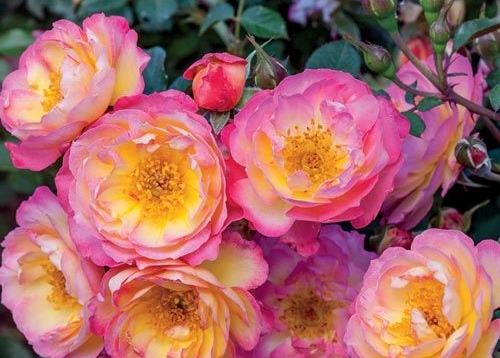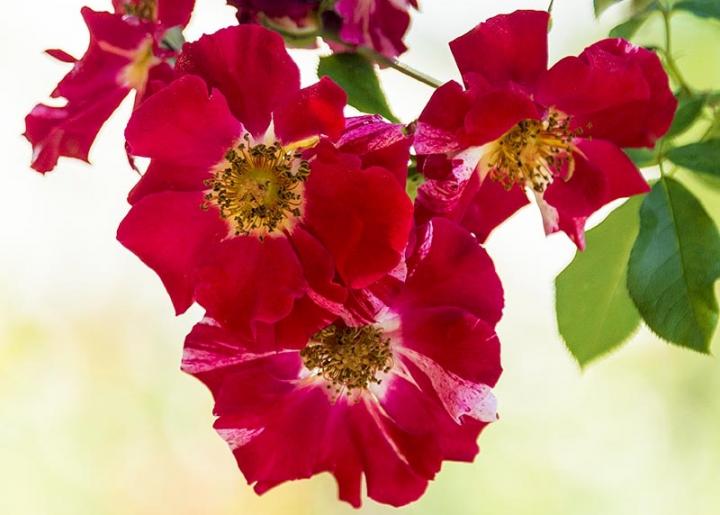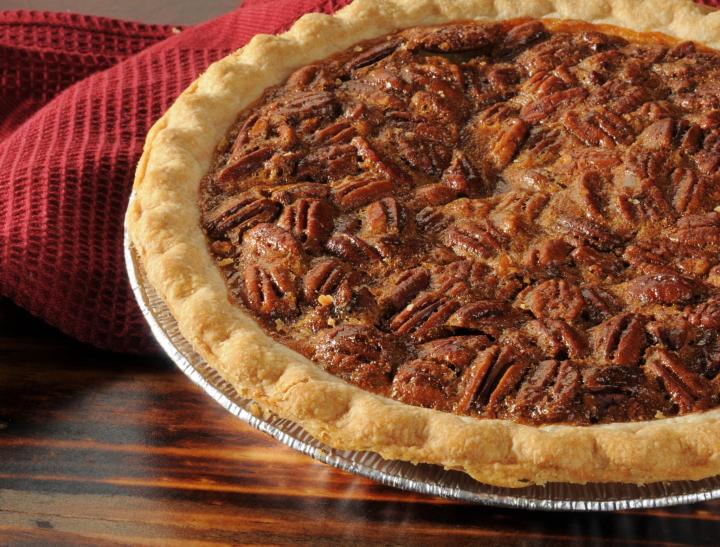Year of the Rose: Best Types of Roses
Best Types of Roses and Rose Care Tips
Best Types of Roses and Rose Care Tips

‘Rainbow Happy Trails’ by Brecks.com.
‘Peace’ rose, a popular hybrid tea rose variety. Photo from Wikipedia.

‘Fourth of July’ rose from WeeksRoses.com.
 https://www.almanac.com/content/year-rose-best-types-roses?trk_msg=2VSRIHU5GLG4VCTE58SQ2T4LRK&trk_contact=EEBLFVJ2I0VAQT9EM5JFVJAK9O&trk_sid=E88F86PTM63JKVEF64IUB53FK0&utm_source=Listrak&utm_medium=Email&utm_term=Year+of+the+Rose%3a+Best+Types+of+Roses+(read+more)&utm_campaign=Companion+Daily
https://www.almanac.com/content/year-rose-best-types-roses?trk_msg=2VSRIHU5GLG4VCTE58SQ2T4LRK&trk_contact=EEBLFVJ2I0VAQT9EM5JFVJAK9O&trk_sid=E88F86PTM63JKVEF64IUB53FK0&utm_source=Listrak&utm_medium=Email&utm_term=Year+of+the+Rose%3a+Best+Types+of+Roses+(read+more)&utm_campaign=Companion+Daily
In honor of the rose’s long and colorful history, as well as its place in gardens, the National Garden Bureau named 2017 the “Year of the Rose.”
In celebration of the close of this rosaceous annum, let’s take a
closer look at “the queen of flowers.” Here are some of the best rose varieties to grow in your garden!
Today, roses are enjoying new popularity. During the past 20 years,
rose breeders, including Weeks Roses in Wasco, California, have been
developing and introducing roses that require less maintenance and are
more disease-resistant and fragrant. “Modern rosebushes are both
beautiful and tough in a wide range of growing conditions, so they are
easier to grow than ever before,” says Christian Bédard, research
director for Weeks Roses.One of the biggest challenges for gardeners can be knowing how to use roses, based on their growing habit. An understanding of the types of roses eliminates any woes.
The Origin of the Rose
It is believed that the cultivation of roses began about 5,000 years ago in China. During the Roman Empire, rose gardens were established in the Middle East. In the 17th century, kings and queens considered roses legal tender for purchases.The era of the modern rose began in 1867, when French breeder Jean-Baptiste André Guillot introduced the first hybrid tea rose. The elegantly shaped buds soon became the standard look for a proper rose flower—a tradition that continues today.
Learn more about the history of roses and about some classic rose varieties.
Types of Roses
- When most people think of roses, a hybrid tea rose
comes to mind. Known for their long stems, these are ideal cut flowers.
Hybrid tea rosebushes have a generally upright shape, and the plants
reach 3 to 6 feet tall. Popular varieties of hybrid tea roses include
‘Pretty Lady Rose’, ‘Mr. Lincoln’, ‘Peace’, ‘Neil Diamond’, and ‘Marilyn
Monroe’.
- New in 2017 from Weeks Roses was a variety of hybrid tea rose called ‘All My Loving’, developed in England by Gareth Fryer. The 4- to 5-inch dark pink flowers sit atop long cutting stems and have 30 to 40 petals. ‘All My Loving’ performs particularly well in hot, sunny climates.
- The floribunda rose, by contrast, generally blooms in clusters of smaller flowers. Popular floribunda varieties include ‘Iceberg’, ‘Julia Child’, ‘Ketchup & Mustard’, and ‘Angel Face’. A new variety of floribunda rose called ‘Easy to Please’ brings the added benefit of increased disease resistance. This variety, part of the Easy-to-Love collection from Weeks Roses, grows well in a wide range of climates and conditions.
- Climbing roses are the largest of the rosebushes. The canes of a full-size climbing rose can rise 10 to 12 feet tall. These plants do well when grown on a trellis, fence, or wall; regular pruning may be required. Some popular varieties of climbing roses include ‘Fourth of July’, ‘Above All’, and ‘Stormy Weather’. ‘Tropical Lightning’, also new from Weeks Roses, features blooms that mix sunset orange and smoky purple, with cream-color stripes. ‘Tropical Lightning’ also has improved disease resistance that makes it lower-maintenance.
- Shrub roses are good choices for large landscapes
or gardens. Their rounded growth habit can result in roses that are 3 to
5 feet tall and 3 feet wide. Shrub roses are vigorous, with large
clusters of blooms. Popular varieties include ‘Home Run’, ‘Edith’s
Darling’, and ‘Children’s Hope’. A new shrub rose variety called
‘Watercolors Home Run’ does not set seeds; all of the plant’s energy
goes into producing flowers—its clusters of pink flowers with bright
yellow centers just keep coming! ‘Watercolors Home Run’ is highly
disease-free and has self-cleaning petals (meaning no deadheading
required), making it a nearly maintenance-free plant.
- Shrub roses that have low-growing and wide-spreading habits are called ground cover roses. Two new ground cover roses are ‘Rainbow Happy Trails’, which flowers with pink outer petals and golden centers, and ‘Sunshine Happy Trails’, with a profusion of sunny yellow flowers.
Carefree Care
Roses have a reputation for requiring complicated care, but this needn’t be so, according to Christian Bédard. “You don’t need to do much to get the best new roses to grow well,” he says. “Newer varieties of roses are much more vigorous and disease resistant than older varieties. New roses such as ‘Watercolors Home Run’ and ‘All My Loving’ can thrive in most climates with no spraying and basic pruning at the beginning of the growing season.”Learn about the easiest rose varieties to grow for beginners.
How to Grow Roses
Rosebushes—whether new varieties or heirloom varieties that have been available for decades—grow best in full sun with moist, well-drained soil that is rich in organic matter.- Light: For the best show of flowers and
healthiest plants, rosebushes need to receive 6 to 8 hours of sunlight
daily. In especially hot climates, roses do best when they are protected
from the hot afternoon sun. In colder climates, planting a rosebush
next to a south- or west-facing fence or wall can help to minimize
winter freeze damage.
- Select a sunny spot that will allow enough room for a mature plant. If planting several rosebushes together, space them at least 3 feet apart. Dig a hole deep and wide enough to accommodate the plant’s roots.
- Soil: Roses thrive best in soils that retain water without becoming waterlogged. Amend the soil as needed: If your soil is heavy clay, mix in compost, peat moss, and other organic matter to improve drainage. Adding compost to lean, sandy soils helps to retain moisture near the plant’s roots.
- Water: Water thoroughly. Then mound up loose soil
around the canes to protect the rose while it acclimates to its new
site. For best results, plant rosebushes on a calm, cloudy day. Planting
on a hot, sunny day can stress a rose (or any type of plant).
- Give the rose the equivalent of 1 inch of rainfall per week during the growing season. Water at the soil level to avoid getting the foliage wet; wet leaves can encourage diseases such as black spot and downy mildew.
Best Rose Varieties by Climate
- Hot and dry climates (U.S. Southern California and the Southwest): ‘Pretty Lady Rose’, ‘Neil Diamond’, ‘Doris Day’, ‘Tropical Lightning’, ‘Coretta Scott King’
- Cool and wet climates (Pacific Northwest): ‘Violet’s Pride’, ‘Sparkle & Shine’, ‘Pretty Lady Rose’, ‘Oh My!’
- Hot and humid climates (U.S. Southeast): ‘Watercolors Home Run’, ‘Home Run’, ‘Julia Child’, ‘Take It Easy’, ‘Easy to Please’
- Cold-winter climates (Northeast and U.S. Midwest): ‘Watercolors Home Run’, ‘Cape Diamond’, ‘Party Hardy’, ‘Julia Child’, ‘Children’s Hope’, ‘Easy to Please’












